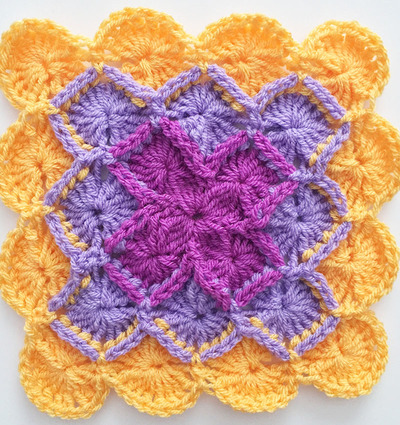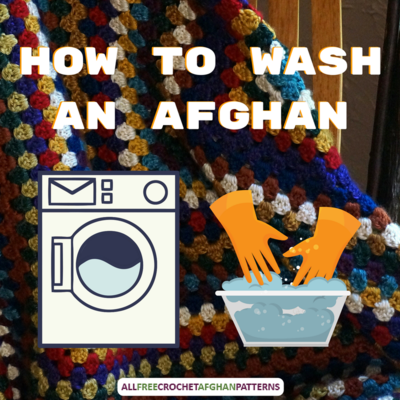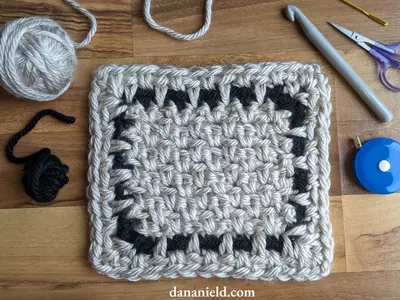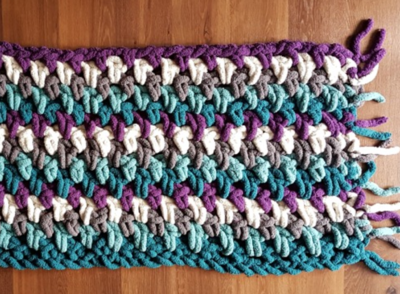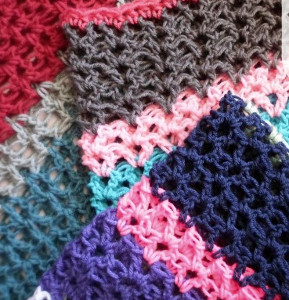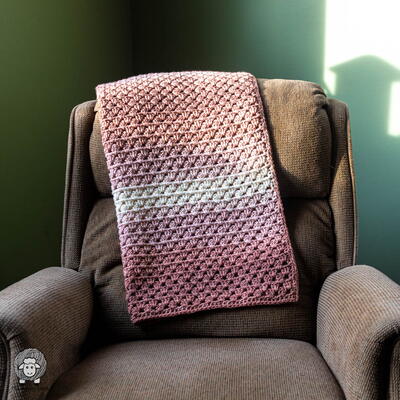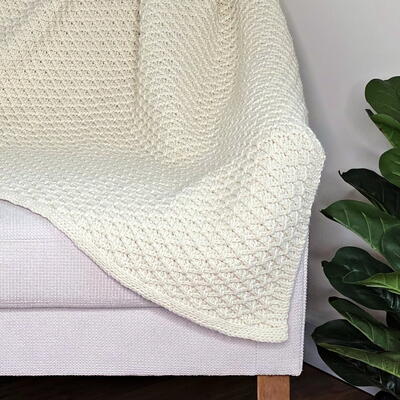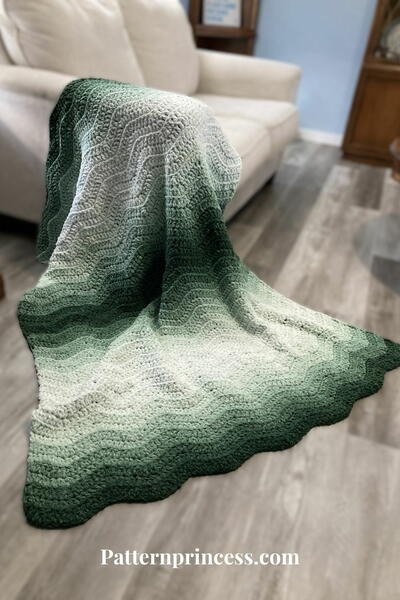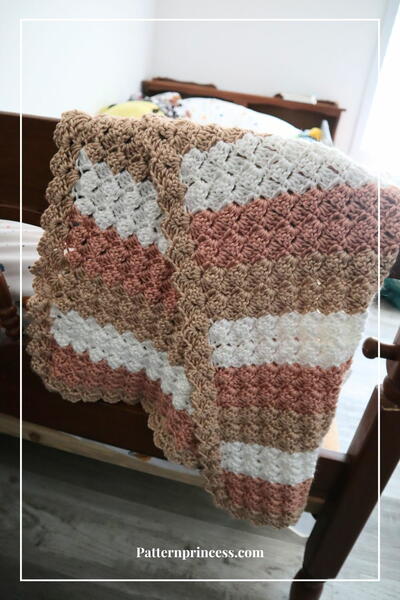Keeping Your Crochet Blanket Pattern Clean
From acrylics to older wool, don't run the risk of ruining your hard crochet work!

A smelly afghan basically defeats the point of curling up with warm crochet—it's supposed to be about comfort, and you don't want to feel like you're snuggled up in musty mold. Yet, after spending so much careful time on your crochet blanket pattern, cleaning can be a daunting task when it seems like there are so many rules to keep in mind. This collection, Keeping Your Crochet Blanket Pattern Clean, can help solve your laundry room anxiety. Although every yarn reacts a little differently, there are two main types, wool and acrylic, which require very different cleaning techniques. Wool generally needs to be handwashed, while acrylic is machine safe on specific temperatures settings.
Sometimes you don't know what type of yarn you're dealing with, though—Grandma gave you a great blanket for Christmas, the crochet process is ancient history and you just can't remember, and so on. You can carefully figure this out by trying the burn test: acrylic or nylon will melt; cotton or wool will scorch. This brings up an important general point which you should keep in mind as you make decisions about afghan care—yarn is flammable. The moral of the story is that you shouldn't do anything to your afghans at extremely high temperatures, or you might not have an afghan anymore. This collection on of tips and guidelines for washing wool blankets and acrylic fabric will help you keep your crochet afghan fresh and clean.
Guidelines for Washing Crochet Blanket Patterns
As mentioned, check to make sure you know what type of material your afghan pattern is. Watch out for those that are a mixture of two different types since one might react poorly to a machine while the other might not. In that case, it's generally best to go with hand washing, which will follow the same procedure as washing wool.
General Tips on How to Wash a Crochet Blanket
There are a few guidelines that can apply to all crochet blanket patterns. These are just a few suggestions to get you thinking about your particular piece and are a good idea to skim before diving into the specific yarn types.
-
If you still have the yarn label, always check that first. Many come with instructions on the best way their particular product can be cleaned. If you don't have the label but remember buying it from Lion Brand or Red Heart, pop on over to Google to check out their website and how they recommend washing the product you bought.
-
If you have a gauge swatch, this would be a great time to use it. Test out your cleaning technique on this smaller piece just to be safe on what will happen to your bigger item.
-
Don't wring your afghan. It would definitely be painful for your crochet piece, causing damage and felting. If you decide not to machine dry, lay it on a towel and roll it up to press out water. As long as it isn't dripping wet, you can lay it between towels to soak up excess water, and change these periodically. It is generally best to lay them out on a flat surface or even hang them on your clothes line if they are a managable size. Some experts warn to be careful with hanging, however, because that can cause stretching.
-
When you lay out items, make sure you keep them out of direct sunlight. Although its tempting to do this to minimize drying time, the sun will bleach the colors.
-
When in doubt, hand wash it out. There have been plenty of horror stories about machine-washed blankets shrinking, tearing, or just coming out generally ruined. Following general hand washing guidelines like those for wool, you can't go wrong giving your blanket a little extra TLC.
How to Wash Wool
It is generally a bad idea to try machine washing wool blankets, although some newer yarn brands are evolving and can handle it. Felting and shrinking are both hazards of machine washing, so if you have an older wool blanket or just want to be cautious, it isn't too difficult to hand wash your wool.
-
Use a bathtub, washbin, or even one of those big tupperware containers.
-
Fill this with lukewarm or cool water (avoid going extreme at either end of the thermometer).
-
Add your cleaning agent. Not all cleaning agents are created equal, so this is an important step. It's generally advised against to use detergents, although there are some fearless crocheters who have never had a bad experience with detergent. Great options are woolwashes like Woolite, Eucalan, or Kookaburra. You can also try soap flakes or even hair shampoos like Suave (but don't use the kind for oily hair and especially not conditioner).
-
Handwash the blanket by massaging it with your hands, making sure to be careful and not scrubbing hard, which will damage the wool.
-
Leave it to soak for anywhere from 15 minutes to an hour.
-
You can drain and then refill the tub without adding more of your cleaning agent in order to rinse the suds out if you want.
-
Carefully squeeze the water out, and then it is time to dry. Lay it out and block it with pins, or lay it between two towels, then roll towels up to press out water.
-
Tip: if you want the drying process to speed up, bring in a fan to keep the air moving around your blanket.
How to Wash Acrylic Material
Does acrylic shrink? That's the million dollar question, and we have the answer. As happens with most materials, cleaning acrylic can shrink it a little bit, but with the proper temperature settings, it won't be enough to affect the overall piece. For this reason, it is generally safe to wash your acrylic fabric blankets in the washing machine and use the dryer.
-
If you decide to put your acrylic afghans in the washing machine, be sure to put it in by itself or with towels. Zippers or rough fabric from other clothing would tear it up if they are in there together.
-
Pro tip: put your blanket in a mesh bag or even a pillow case to give it extra protection while washing.
-
Most washing machines have a "gentle" or "delicate" setting, so use that with cool water. Some yarns can handle a warm wash, so again, check your specific yarn labels.
-
If you machine wash acrylics, make sure you dry them, too. The expansion during washing needs to be counteracted by the slight shrinking during drying. Dry on low heat or tumble dry.
References:
What is your favorite stitch to use on afghan patterns?


